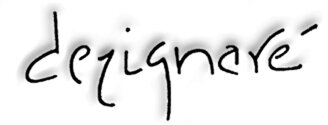|
Your portfolio presentation will be your first opportunity to make an impression. There needs to be a fine balance between presenting your best work and overwhelming the viewer. Pick only your finest examples and provide a good cross-section of work. Most often portfolios are presented in some type of notebook presentation. Boards are cumbersome and are difficult to transport, but supplying technical drawings is a plus. It is important for a prospective employer to understand your abilities, which originals often convey better than photographs.
Other techniques include fewer photographs, which are enlarged and mounted for stiffness, so that each one is pulled out of a special portfolio case and individually viewed, rather than flipping through pages. This adds to their importance.
PowerPoint Presentations are possible, but the equipment to display these types of presentations is not readily available and expensive to rent. Presenting your work on a laptop is a viable possibility. You can also save the information to a zip disk. Creating a CD of a presentation is feasible. This method enables you to leave a sample of your work with a prospective employer to view and generate a "Wow" factor. but requires a professional. Consider eye-catching animation.
Creating an online version of your work is a viable option. This method allows prospect employers worldwide to view your resume and your work. The key to success with this method is keeping it extremely professional, not linking to any personal site if possible, scanning only your best work and minimizing the size of each graphic, so the page loads quickly. Creating a Web Portfolio enables you to provide 24-hour access to your work and is a good promotional tool.
The best way to present your work is to find the most dynamic alternative available to you. It is best to show a broad base of abilities and styles. Technical drawings can be included. Photographs are common. We would suggest the larger format to allow you to show horizontal and vertical images without having to rotate the portfolio.
Often photographs are used, but elevations, renderings, floor plans, material boards, or any tool at your disposal to show your professionalism and ability for a specific project should be utilized. With this said, we suggest keeping it to a presentation that might last 15-20 minutes, depending on the size of the project, the scope of services required, and the size of a potential project, it might well be far more extensive.
Remember selling yourself to a prospective employer is much like selling your services to a potential client. Make the presentation as slick as possible, give it thought and add your own personal style. A portfolio presentation that is easy to alter, as you develop and projects change, is preferable.
Another thing to consider is how you choose to discuss the materials you present. Descriptions of the projects including special circumstances in past projects, i.e. problems solved, will add a great deal to the overall interaction you will have with a potential client or employer.
Q: What are the most desirable skills for regent grads to possess, as viewed by industry professionals?
- Competency, drafting or cad skills, skillful presentation of work, good basic knowledge of interior design
- Enthusiasm and a desire to learn
- Sales skills and friendly demeanor
- Professional appearance
Q: Can you "overdo" a portfolio design?
Perhaps, perhaps not. First impressions count and the attention to detail you give your portfolio shows. If your portfolio and the presentation of your work were thought out in every detail, one would assume your work would be up to the same level. Showing a variety of projects is important to illustrate your competence in several areas.
Q: How much text is necessary to include in your portfolio?
For a direct client presentation written words are not as important as the visual experience. Your interaction and people skills become most important. With Websites it is much like a magazine. Use approximately 2/3 photographs and images and 1/3 text, but make the text count. Stating your philosophy, the scope of the project, size, challenges, date and other specifics provides valuable information.
Q: Are their any books on portfolio design that you have found useful?
Barnes and Noble, Portfolio Design by Harold Linton is tailored for the industry.
|
